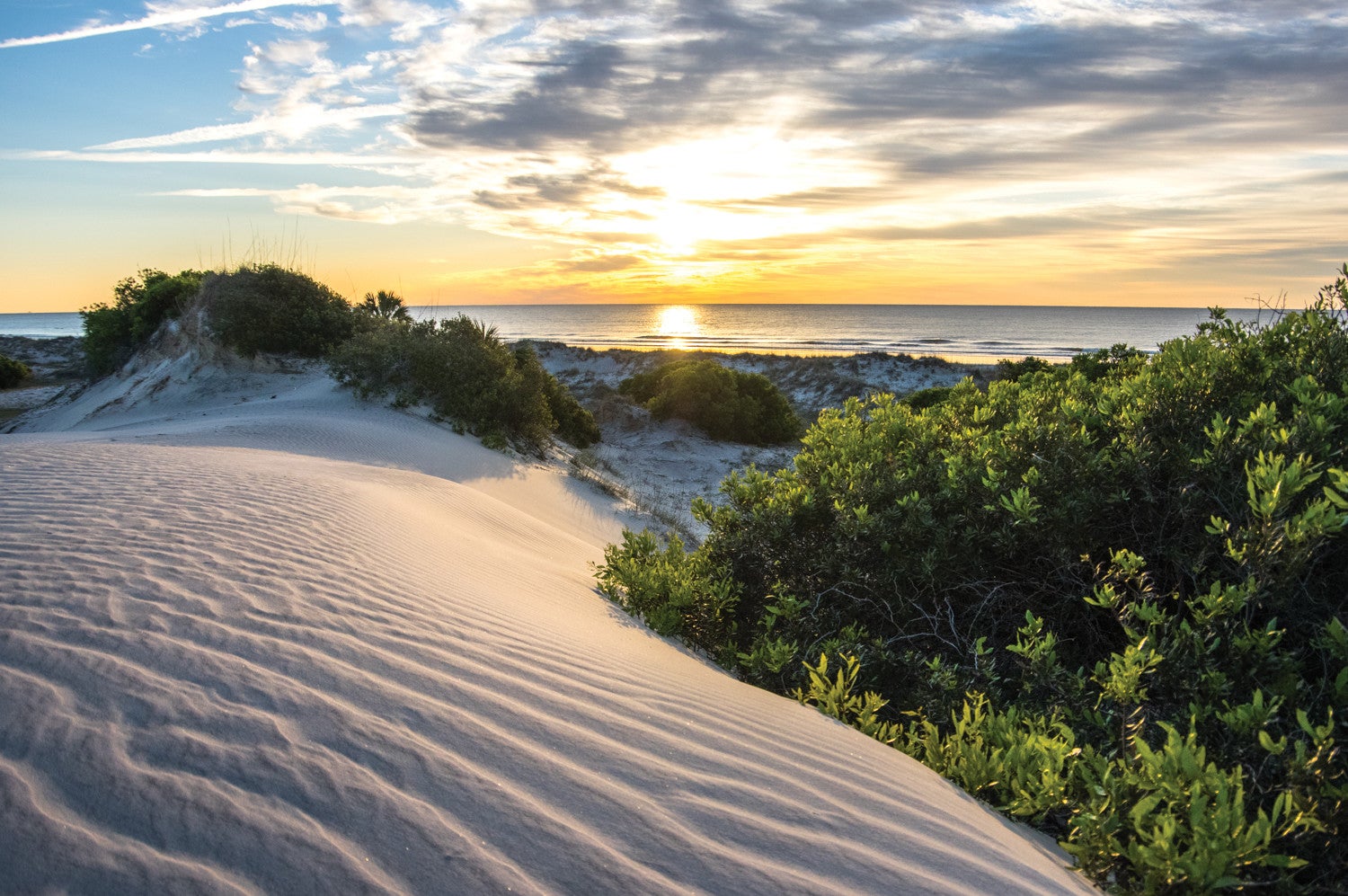4 Underrated Hiking Destinations to Visit Now

'Photo by Ian Wilson'
Parallel Trail
Cumberland Island National Seashore, Georgia
Fancy Bluff Creek is all that stands between you and more than 50 square miles of live oak canopies, palmetto groves, and sand dunes on Georgia’s largest island. But consider it more bonus than barrier—it’s the reason Cumberland sees only 60,000 or so visitors every year. A 45-minute ferry ride ($28 round-trip) will deliver you to Sea Camp, where you should try the Parallel Trail, a 6.1-mile vein through the island. Pass a live oak canopy near mile 2.7, where resurrection ferns—which, fun fact, reproduce by spores, not seeds—crowd the path. Cruise north through coastal woods and past swamps (gators here) to a saw palmetto forest. Retrace your steps from Hickory Hill.
Mariscal Canyon
Rio Grande Wild & Scenic River, Texas
The Rio Grande is reason enough to visit south Texas before summer’s over. The river splashes through cathedral gorges draped with greenery on its route to the Gulf of Mexico—which is no doubt why most folks visit Big Bend National Park. But last year, only 463 people headed farther downstream to where the Rio Grande twists through the steep, limestone walls of Mariscal Canyon. The catch: There are no footpaths. If you have the paddling chops, launch in Talley and float 10 miles through the canyon, which squeezes down to 8 feet wide at points. Expect class II and III rapids as the Rio Grande careens between 1,400-foot-tall cliffs in the first 3.5 miles (get a full rundown), but then it’s 6.5 miles of flatwater to the take-out in Solis.
Historic Quarry Trail
Fossil Butte National Monument, Wyoming
It’s easy to get overlooked in Yellowstone’s massive shadow, but this monument features many of the same geological highlights as the national park with only a fraction of the crowds. Fossil Butte National Monument saw roughly 20,000 visitors last year (compared to Yellowstone’s 3.5 million). Sample it on the Historic Quarry Trail, a 2.5-mile loop that runs along the monument’s 7,599-foot namesake. Near mile 1, scramble to the top of the butte for a view over the high desert, where barren ridges abut slopes covered in sagebrush and aspens. Spot an ancient lakebed that has hidden some of the best-preserved fossils on record, then coast to the land of limestone and ash, which formed 52 million years ago.
Grand Portage Footpath
Grand Portage National Monument, Minnesota
In the 300 years since French-Canadian fur trappers used this route along the muddy Pigeon River, not much has changed. It probably sees the same amount of foot traffic (only 30,000 people make it to the monument each year, let alone its trails), the views over Lake Superior are the same, and it’s still a rooty, tough-to-follow trail. But, since you don’t have to shoulder a 90-pound bale of beaver pelts, give it a go: From the Heritage Center on Lake Superior, wend 8.5 miles east over rocky ridges and through forests of birch, aspen, and spruce to Fort Charlotte (leave a shuttle car or turn around sooner). Near mile 1.5, look for the Parting Trees; a 19th-century explorer named it so because it’s your last over-the-shoulder look at Superior.